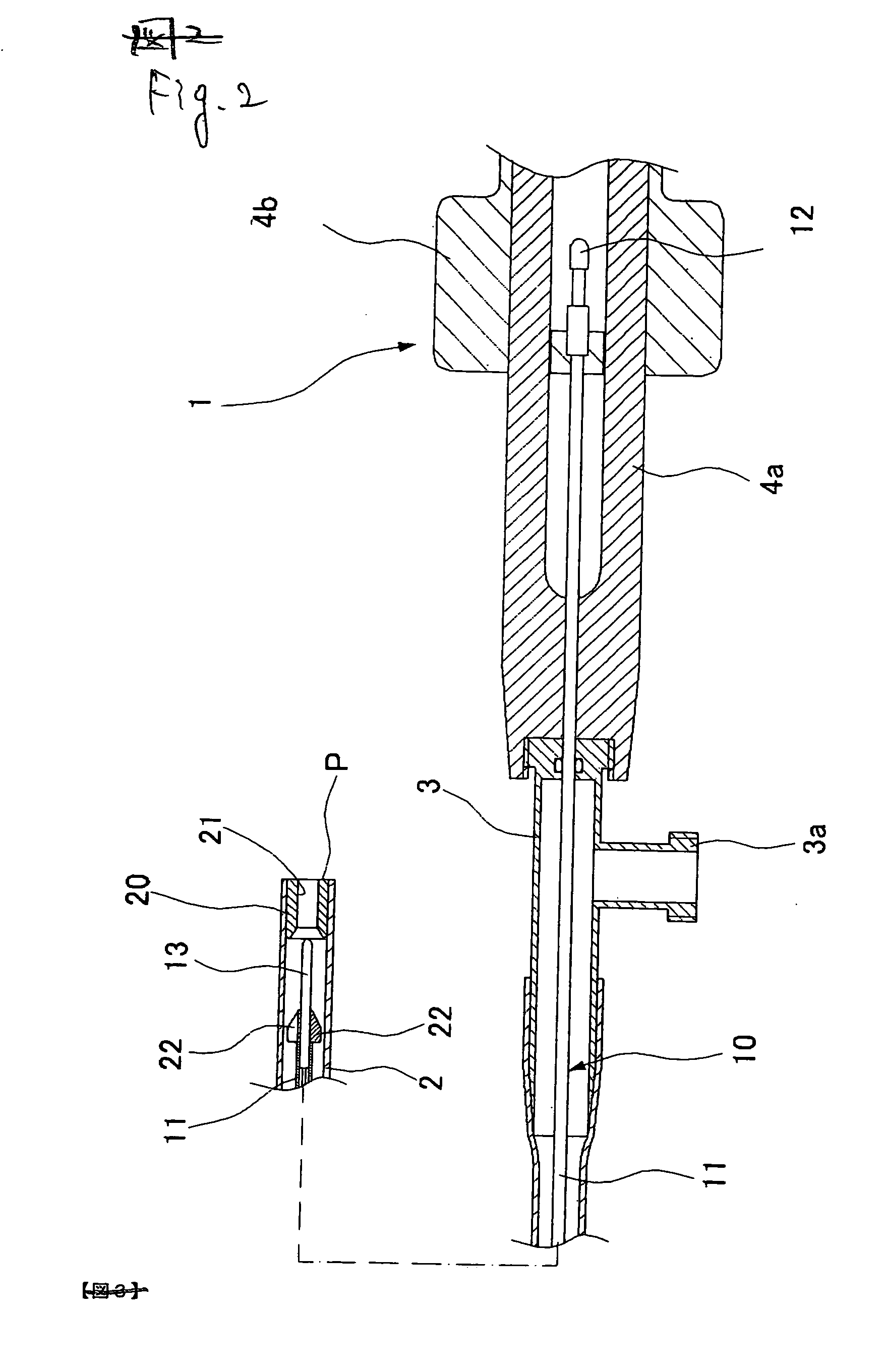High-frequency treatment tool
a high-frequency treatment and tool technology, applied in the field of high-frequency treatment tools, can solve the problems of inability to confirm the diseased portion, the front end of the needle-like knife cannot be captured in the observation field of the endoscope, and the inability to secure the safety of treatment, so as to achieve safe and rapid treatment and simple structure.
- Summary
- Abstract
- Description
- Claims
- Application Information
AI Technical Summary
Benefits of technology
Problems solved by technology
Method used
Image
Examples
first embodiment
[0051] [First Embodiment]
[0052] Hereinafter, the first embodiment of the invention will be explained. FIG. 3 and FIG. 4 show the section of the front end portion of the high-frequency treatment tool in actuating states different from each other. As clearly seen in FIG. 3, the flexible cord 11 is formed by inserting, for example, the outer circumference of a lead wire 11a into an insulating coating 11b, and has flexibility in at least the bending direction. The base end of the lead wire 11a of the flexible cord 11 sticks out by a predetermined length from the portion joined to the slider 4b to form a contact portion 12. This contact portion 12 is connected to an unillustrated high-frequency power supply apparatus in a disconnectable manner.
[0053] The flexible cord 11 forming the treatment tool body 10 is extended to the inside of the flexible sheath 2 through the inside of the connecting pipe 3 from the portion attached to the slider 4b. The needle-like knife 13 is provided so as to...
second embodiment
[0060] [Second Embodiment]
[0061] Hereinafter, the second embodiment of the invention will be explained.
[0062] As shown in FIG. 8, the flexible code 11 includes a conductive line portion 11a formed of a flexible member whose outer circumferential portion has been applied with insulating coating, a base-end portion of the conductive line portion 11a is provided while being protruded by a predetermined length from a coupling portion to the slider 4b, a contact portion 12 is provided on the base-end portion, and the contact portion 12 is attachably and detachably connected to an unillustrated high-frequency power unit. As shown in FIG. 9, the front end of the conductive line portion 11a is coupled with a hollow wire 11b. The hollow wire 11b is formed of a conductive member having flexibility in a bending direction, and an outer circumferential surface thereof is coated with an insulating member. Therefore, the conductive line portion 11a is electrically conductive with the hollow wire ...
PUM
 Login to View More
Login to View More Abstract
Description
Claims
Application Information
 Login to View More
Login to View More - R&D
- Intellectual Property
- Life Sciences
- Materials
- Tech Scout
- Unparalleled Data Quality
- Higher Quality Content
- 60% Fewer Hallucinations
Browse by: Latest US Patents, China's latest patents, Technical Efficacy Thesaurus, Application Domain, Technology Topic, Popular Technical Reports.
© 2025 PatSnap. All rights reserved.Legal|Privacy policy|Modern Slavery Act Transparency Statement|Sitemap|About US| Contact US: help@patsnap.com



